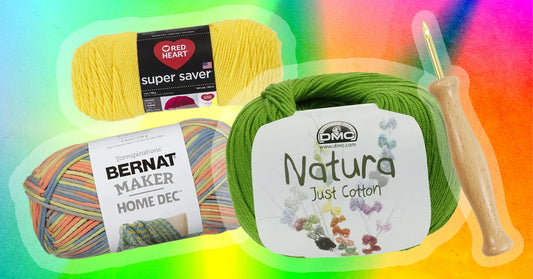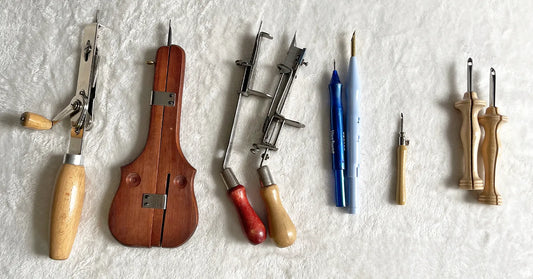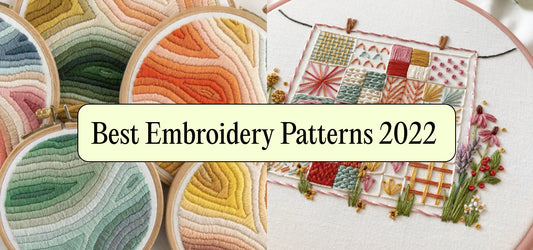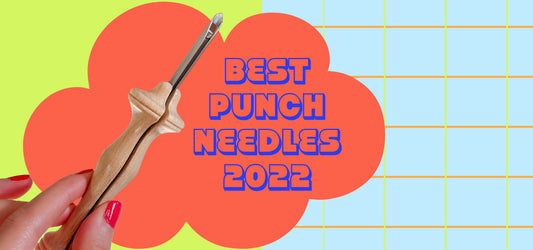What Does DIY Mean?

DIY stands for "Do It Yourself," which is the practice of completing tasks or projects oneself instead of hiring professionals or buying pre-made products.
DIY has grown in popularity over the years, with people from all walks of life embracing the concept. It's not limited to one particular field but has found its place in various areas, including home improvement, crafts, technology, and fashion.
Key Takeaways
- DIY stands for "Do It Yourself," emphasizing self-completion of projects
- It's popular across various fields like home improvement, crafts, and fashion.
- DIY promotes self-reliance, creativity, and resourcefulness
- By undertaking tasks themselves, individuals develop practical skills and gain a sense of accomplishment
- DIY enthusiasts often share their knowledge and experiences, creating a supportive community that values self-sufficiency and independence
The Origins of DIY
The concept of DIY has its roots in the desire for self-reliance and the ability to create, modify, or repair things independently. It emerged as a movement in the 1950s and gained momentum in the 1970s with the rise of punk culture. It was during this time that the abbreviation "DIY" became widely used as shorthand for this ethos.
DIY encompasses a wide range of activities, from simple household repairs to complex artistic endeavors. Its definition has expanded to include not only physical tasks but also self-education and personal development.
To give you a better idea of what DIY entails, let's take a look at the definition and abbreviation in more detail:
| Term | Definition |
|---|---|
| DIY | Abbreviation for "Do It Yourself" which refers to the practice of completing tasks or projects oneself instead of hiring professionals or buying pre-made products. |
As you can see, the definition of DIY is straightforward, but its interpretation can vary depending on the context and the individual's goals. DIY can mean building a bookshelf or coding a new website, and everything in between. The essence of DIY, however, remains consistent - it emphasizes individual creativity, self-reliance, and resourcefulness.
The Evolution of DIY
The DIY culture has undergone significant evolution since its emergence in the mid-20th century. Today, DIY has become a mainstream movement that spans various fields, including home improvement, arts and crafts, technology, and fashion. It has even become part of slang, with phrases such as "DIY or die" used to convey the importance of self-reliance and self-sufficiency.
DIY has also been reinterpreted to suit modern needs and preferences. For example, the rise of the maker movement has placed a greater emphasis on digital fabrication and open-source technology, expanding the possibilities of DIY even further.
As the DIY culture continues to evolve, it remains an essential aspect of modern society, promoting creativity, self-sufficiency, and the pursuit of personal passions and interests.
DIY in Various Fields
DIY has become a popular term in modern culture, and it has found its way into various fields, each with its own interpretation of the concept. In slang, DIY refers to a person's effort to address a problem without the help of professionals or specialized equipment.
In general, DIY encompasses the idea of creating, modifying, or repairing things independently rather than purchasing pre-made products or hiring professionals.
In the realm of home improvement, DIY encourages individuals to tackle renovations, repairs, and even construction projects on their own. DIY enthusiasts believe that personal involvement in home projects can lead to better results, lower costs, and a sense of satisfaction.

In the creative arts, DIY promotes handmade crafts, artistic endeavors, and customization of existing products. The concept of DIY in fashion has captured the attention of many. In fashion, DIY refers to individuals creating and altering their clothing to express their personal style.
| DIY in Various Fields | Interpretation |
|---|---|
| Home Improvement | Encourages individuals to tackle renovations, repairs, and construction projects on their own. |
| Creative Arts | Promotes handmade crafts, artistic endeavors, and customization of existing products. |
| Technology | Encompasses electronics, coding, and building gadgets. |
| Fashion | Encourages clothing alterations, upcycling, and personal style expression. |
In technology, DIY encompasses electronics, coding, and building gadgets. It allows individuals to experiment with technology, customize it to fit their needs, and learn new skills.
The meaning of DIY varies depending on the context, but at the core, it emphasizes individual creativity, self-reliance, and resourcefulness.
DIY and Creativity
The concept of DIY goes beyond practicality and resourcefulness. It also fuels creativity and provides an outlet for self-expression through personal projects. DIY enables individuals to unleash their imagination, experiment with different materials and techniques, and bring their ideas to life. By encouraging creativity, DIY also promotes problem-solving skills, innovation, and a unique perspective on design and functionality.
DIY projects often require a level of ingenuity and critical thinking, which can lead to exciting and unexpected results. Experimentation is key in DIY, and the process of trial and error can provide valuable lessons and newfound skills. The possibilities are endless, from upcycling old furniture to building custom electronics.
A recent study found that engaging in creative activities such as DIY can have significant benefits for mental health, including reduced stress and improved mood.1 DIY can also provide a sense of pride and accomplishment, boosting self-esteem and confidence.

In conclusion, DIY and creativity go hand in hand. By fostering self-expression and encouraging experimentation, DIY provides a platform for personal growth and innovation. So why not pick up a hammer, paintbrush, or soldering iron and see where your creativity takes you?
- Kaimal, G., Ray, K., & Muniz, J. (2016). Reduction of cortisol levels and participants’ responses following art making. Art therapy, 33(2), 74-80.
DIY and Self-Reliance
One of the fundamental principles of DIY is self-reliance. By taking on tasks themselves, individuals gain practical skills and a sense of accomplishment. DIY encourages people to develop their problem-solving abilities, enabling them to handle challenges in a creative and innovative way.
DIY also promotes frugality, as people can save money by avoiding the costs of professional services or pre-made products. Especially in today's climate, where many people face financial uncertainty, DIY can be a valuable tool for managing expenses.
Furthermore, DIY's emphasis on resourcefulness promotes sustainability and environmental consciousness. By upcycling and repurposing items, DIY enthusiasts can reduce waste and decrease their environmental footprint.
"By undertaking DIY projects, individuals gain a sense of empowerment and independence, knowing that they can take charge of their surroundings and create things according to their needs and preferences."
Conclusion
DIY, or Do It Yourself, is a concept that promotes self-reliance, creativity, and resourcefulness. It encourages individuals to take on tasks and projects independently, fostering a sense of empowerment and accomplishment. DIY has its roots in self-sufficiency and has evolved to encompass various fields such as home improvement, arts and crafts, technology, and fashion.
By undertaking tasks themselves, individuals develop practical skills and gain knowledge, saving money by avoiding the costs associated with professional services or pre-made products. DIY promotes sustainability by reducing waste and encouraging upcycling. It also creates a supportive community that values self-sufficiency and independence, allowing for the sharing of experiences and knowledge.
DIY fuels creativity, enabling individuals to bring their ideas to life and solve problems in innovative ways. It promotes a unique perspective on design and functionality while encouraging personal expression and self-education.
So next time you encounter the term DIY, remember its meaning and the vast possibilities it offers for personal growth and creativity. With DIY, the only limit is your imagination.
FAQ
What does DIY mean?
DIY is an acronym for "Do It Yourself" and refers to the practice of completing tasks or projects oneself instead of hiring professionals or buying pre-made products.
What are the origins of DIY?
The concept of DIY has roots in self-reliance and the desire to create, repair, or modify things independently. It emerged as a movement in the 1950s and gained momentum in the 1970s with the rise of punk culture.
How is DIY applied in various fields?
DIY has permeated various fields, including home improvement, creative arts, technology, and fashion. In each field, DIY encourages individuals to take on tasks themselves, promoting individual creativity, self-reliance, and resourcefulness.
How does DIY fuel creativity?
DIY is closely tied to creativity as it provides an outlet for self-expression through personal projects. It allows individuals to unleash their imagination, experiment with different materials and techniques, and bring their ideas to life.
What is the significance of DIY and self-reliance?
DIY promotes self-reliance by encouraging individuals to undertake tasks themselves, developing practical skills and a sense of accomplishment. It also helps save money, promotes sustainability, and fosters a supportive community of DIY enthusiasts.
What is the conclusion about DIY?
DIY, or Do It Yourself, is a concept that encourages individuals to take on tasks and projects independently. It fuels creativity, self-expression, and problem-solving skills while promoting self-reliance, resourcefulness, and a sense of accomplishment.











